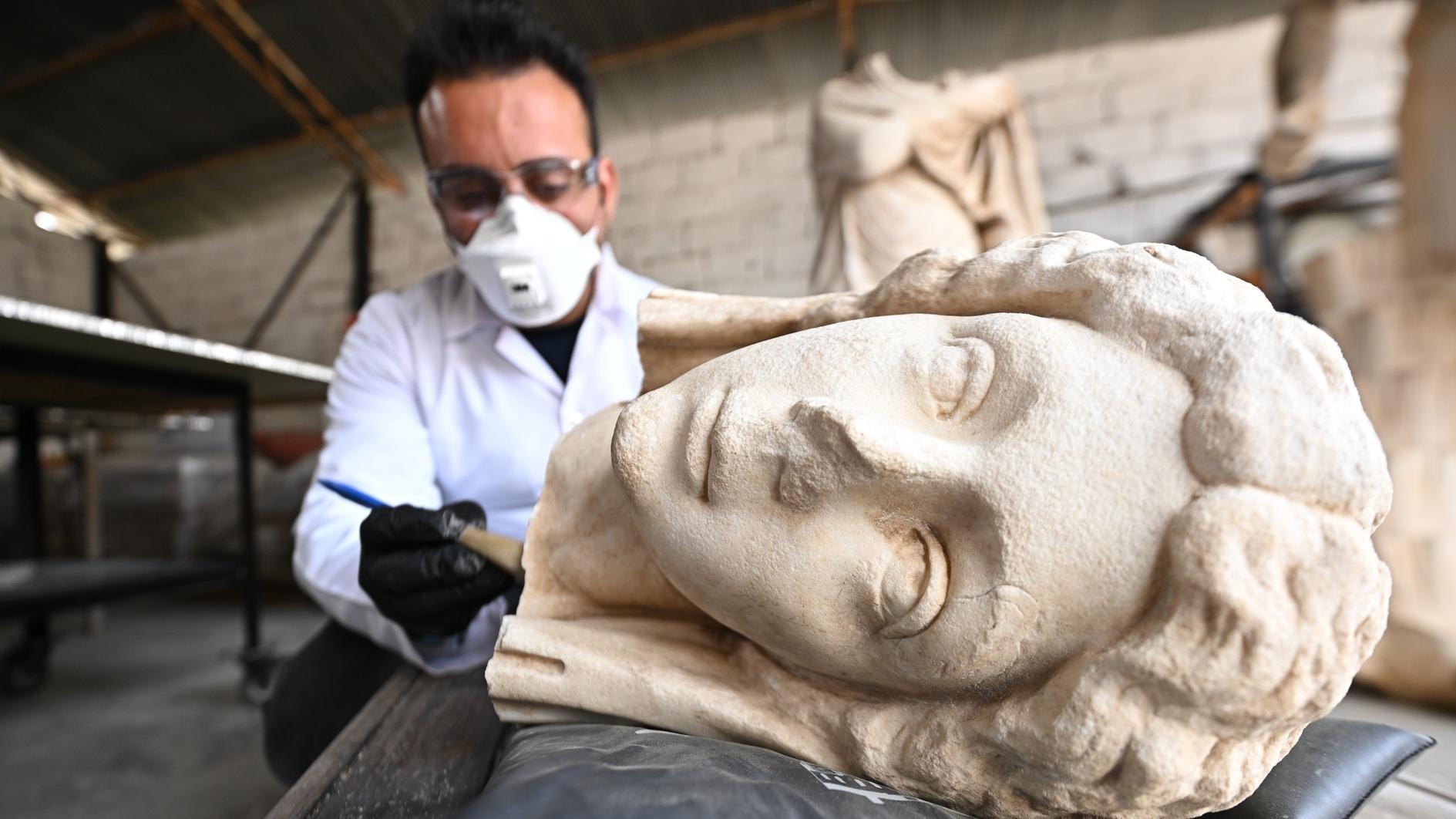
Historical artifacts discovered by excavation teams are being prepared for display through painstaking work by experts in restoration and conservation laboratories, who work with the precision of surgeons.
The process of displaying artifacts that see daylight again after hundreds of years requires extensive teamwork behind the scenes.
After being cataloged, photographed and documented at the excavation site, the artifacts are handed over to museums. Following assessments by museum experts, they are delivered to officials at the Regional Restoration and Conservation Laboratory.
Artifacts are cleaned or repaired based on their characteristics, historical period, construction materials and conservation needs. While some require only cleaning, fragmented pieces are reassembled using appropriate materials after lengthy and careful work.
In instances where parts are missing, restorers employ scientifically accepted techniques and materials to maintain the artifact’s structural integrity.
Experts often spend hours on details, using brushes, tiny bits of cotton, or even surgical tools such as probes, forceps and scalpels.
The entire process of restoring the “Clothed Woman” statue, which has been discovered during excavations in the ancient city of Perge in the southern province of Antalya’s Aksu district under the direction of Professor Sedef Çokay Kepçe, was documented by the state-run Anadolu Agency as it was prepared for display by the Antalya Regional Restoration and Conservation Laboratory.
The team began by carrying out a rough cleaning of the statue, which had been buried underground for hundreds of years. They then took measurements of its overall structure and broken sections.
Experts prepared the necessary materials for the restoration, starting with the repair of the base connecting the statue to its pedestal. Work then continued on the statue’s head, which had been found separately from the body. Using appropriate techniques, the head and other parts were reattached, and the statue was reassembled upright.
After the detailed cleaning process, the statue was placed in storage at the Antalya Museum with protective measures for a future exhibition.
Passed on to future generations
Harun Güllü, director of the Antalya Regional Restoration and Conservation Laboratory, said that they are one of 13 regional labs, including one research center, operating under the General Directorate of Cultural Heritage and Museums of the Culture and Tourism Ministry.
He said that experts first analyze the damaged areas of artifacts before determining the most appropriate scientific methods to restore them.
“Our specialists ensure that these pieces are preserved for future generations with surgical precision, in line with scientific standards,” Güllü said.
He noted that the “Clothed Woman” statue discovered at Perge was among the projects undertaken this year.
“The statue was unearthed in eight separate pieces,” Güllü explained. “We first carried out analysis and test fittings. All restoration and conservation work was then completed according to scientific criteria and in a way faithful to the original.”
Güllü emphasized the care taken throughout the process: “From the moment artifacts arrive at our lab until they are displayed, our expert teams work with the utmost attention to every detail. This work involves a large team, extensive expertise and great effort,” he said.